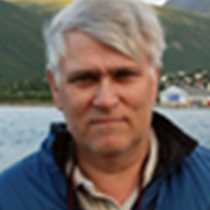Antarctic Peninsula
This morning as our expedition leader made the wake-up call, the sun was sparkling and we approached Lemaire Channel. It was named by Adrian de Gerlache de Gomery, Belgian Antarctic Expedition 1897-99, after his good friend who explored in Belgian Congo. The scenery is breathtaking and as it is early summer here in the south, the landscape is still snow covered.
As we came through the south end of the very scenic Lemaire Channel, the captain turned west and we headed for the corner of Booth Island. With plenty of sea ice together with icebergs, it first looked almost impossible to get anyone ashore. Soon the whole fleet of Zodiac boats was in the water, pushing ice, and we had the landing site cleared and set. Some guests went ashore to explore Jean Baptiste Etienne Auguste Charcot’s 1904 wintering site with his ship Français. In the distance to the north, we saw the highest mountain here in Antarctic Peninsula, named after Charcot’s ship – Mt. Français.
Others made a longer ice cruise and ventured between icebergs and plenty of drifting sea ice. On some ice flows leopard seals were hauling out. Those ashore were also able to see all three brush-tailed penguins – Chinstrap, Adélie, and Gentoo – at the same time. In very few places are you likely to find all three breeding more or less at the same location.
During lunch we did a short reposition to Petermann Island and used Charchot’s 1907 winter site (during his second Antarctic expedition) for our landing site; it’s named Port Circumcision for the holy day, January 1. Charcot sold his ship Français in Buenos Aires in 1905 but as he arrived home to France as a Polar hero he rapidly built a new ship and this time named it Pouquoi-Pas? (Why Not?) and came back to explore and map much more of the western Antarctic Peninsula (1907-09).
Here also our kayaks went into the water. Those brave enough were able to explore some of the coastline of Petermann Island, while others went ashore. Some lucky Zodiac cruisers had glimpses of killer whales, which first were sighted by some of the more eager climbers ashore. Here on Petermann Island we were able to encounter more Adélie penguins and also a colony with blue-eyed shags (cormorants). The “buccaneers of the south” – skuas -- together with snowy sheathbills were both patrolling for opportunistic feeding.
To the south of the position to the ship, in Penola Strait, we could see the line of sea ice. As the wind picked up from the south, sea ice rapidly started to drift towards our landing site and forced us to rapidly close down our operation.
During recap and dinner the captain took us further south into totally covered areas with broken-up sea ice in Grandidier Channel. Imbedded in the sea ice were also several grand icebergs. The ice arch became the photo object for after-dinner activities. On the request from keen photographers, the bridge officers skillfully made several fly-bys of this attractive iceberg.
During the IGY (International Geophysical Year, 1957-58) one of the American participants wrote about his time in Antarctica: “the stark grandeur and crystalline purity of the surroundings.” Most likely it describes and summarizes our day here on the western side of the Antarctic Peninsula. No one can be untouched by the White Continent.




